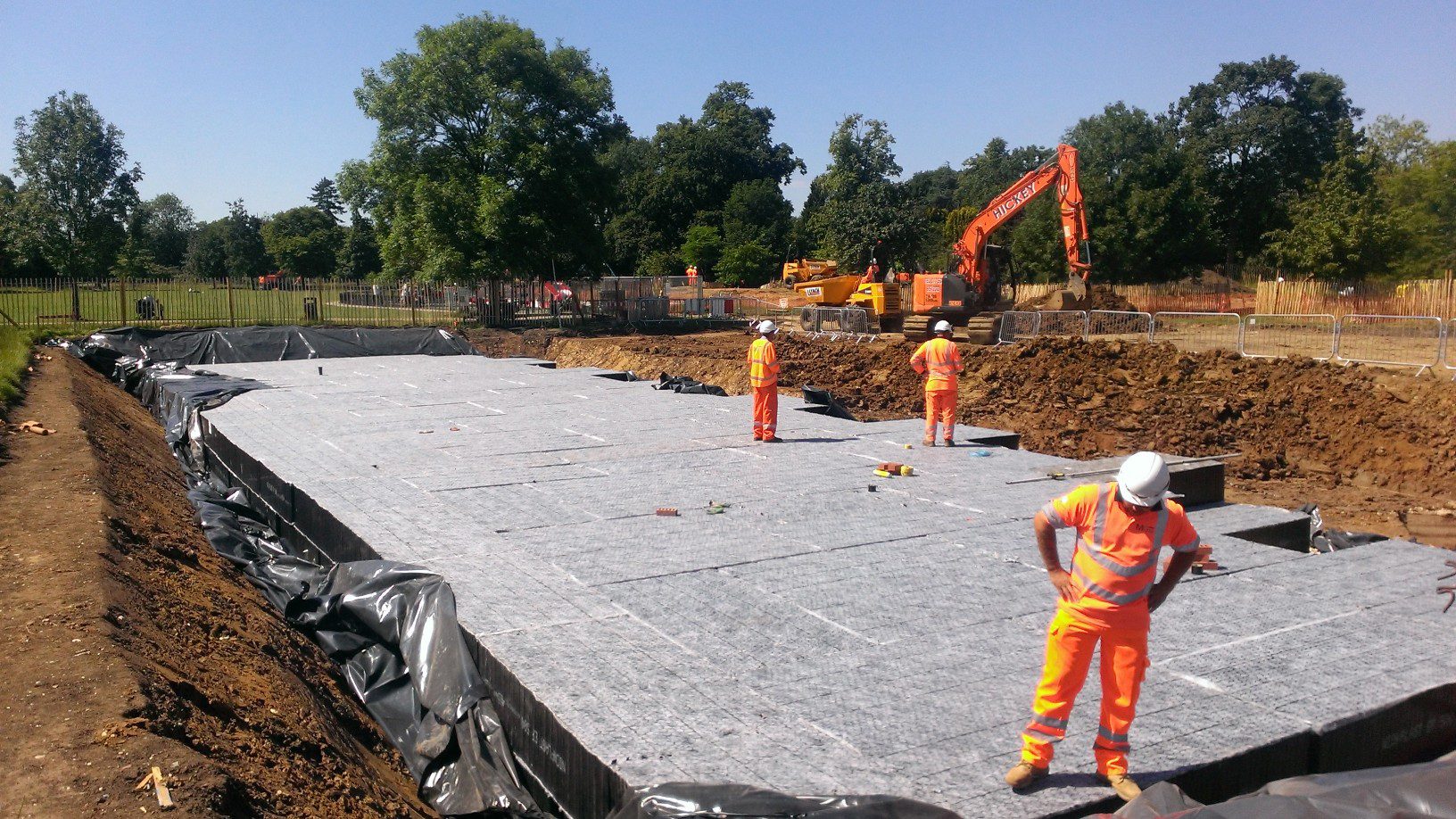
A £4.28m award-winning flood defence project in Southwark, South London, is combining above and below-ground temporary flood storage to create a pioneering solution at two sensitive and historic parks.
The project, led by Southwark Council, is designed to provide much-needed protection for Herne Hill and Dulwich, an area prone to flooding as a result of being in a low-lying catchment of the culverted Effra River – one of London’s so-called lost rivers.
The design involves the construction of above- and below-ground temporary flood storage to capture overland flow during periods of heavy rainfall. Above ground, a mixture of natural earth bunding and dwarf-brick retaining-wall structures are being constructed in Dulwich, while Belair Park will house a combination of earth bund and detention basin to control peak surface water flows. However, a key element of the flood defences is underground geocellular block storage from Hydro International to provide a solution that is sensitive to the needs of the park locations.
The innovative scheme won the 2015 Environment Agency (EA) award for Partnership Project Excellence for its integrated partnership working and community engagement. Community groups had initially objected to flood relief measures involving the use of overground pond storage in the Grade II listed park areas. Engineer Mouchel’s sensitive design proposed using Hydro International’s Stormcell® and Stormbloc® modular block storage systems.
Natural appearance
“The public concern over retaining the parks’ appearance was very strong,” says Mouchel Project Engineer James Armitage. “Even though they realised the flooding problem, they did not want to lose significant areas of the parks to large ponds and swales.” By specifying attenuation tanks using Hydro’s Stormcell® and Stormbloc® modular block geocellular storage systems, several different concerns were satisfied. The block systems are load-bearing and could be landscaped back to their original grassed appearance and significant money and time was saved during installation with less heavy plant on site.
Due to the modular block format, each tank is only one metre in depth, which limited the amount of excavation required. Wrapped in geotextiles, the tanks are covered with topsoil to a minimum depth of 0.5 metres, which means they are effectively invisible.
Vulnerable area
The area has been vulnerable to flooding for a century. Overland surface water flow from the hilly surrounding topography and large open fields coupled with extensive hard surfaces such as roads, car parks and other structures, combine with the impervious underlying London Clay to create a flood risk. Events in 1984, 2004 and 2007 badly affected Dulwich Park, Belair Park, Dulwich Sports Ground and Herne Hill Velodrome as well as the centre of Herne Hill itself.
To combat these risks, the Dulwich and Herne Hill flood alleviation project started in December 2012 as a partnership project between Southwark Council and Thames Water Utilities Ltd (TWUL) supported by the Environment Agency. Southwark Council’s design consultant (Mouchel) undertook the design while Thames Water’s Contractor (Morrison-Galliford Try joint venture) constructed the scheme. Construction started in June 2014 and was substantially completed in December 2014 and officially launched in May this year.
Tank specifications
The underground storage tanks are designed to provide 1 in 10 year storm protection, and the overland storage one in 75 years storms.
In Dulwich Park two tanks each measuring 31.2 m x 36 m x 1.04 m provide over 2,300 m3 of storage using Stormcell® modular blocks and at the Dulwich Sports ground in Belair Park a Stormbloc® tank provides 2,025 m3. The main part of this tank is situated under the sports pitch and shaped so that the Stormbloc® Inspect access chambers are outside the pitch limits. Discharge for all three tanks is to the storm sewer system.
Low landscaped bunds and dwarf retaining walls have also been constructed to guide surface flow with filter drainage along the bottom of the slopes, while retaining the natural appearance required. In Belair Park where the residents were keen on improved biodiversity, a small attenuation pond has also been retained in addition to a small wetland area.
Apart from the filter drainage there was no need for further water quality treatment; the Stormcell® design uses a unique self-cleansing flow system to eliminate silt accumulation and, at Dulwich Park where the setup is slightly different, it was decided to use Stormbloc® as it has a simple inspection and jetting access facility.







